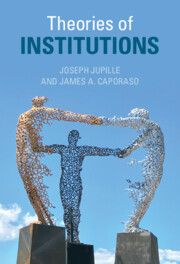Book contents
5 - Institutions and Power
Published online by Cambridge University Press: 06 January 2022
Summary
The conventional (political science) account of three new institutionalisms created no distinctive space for power, which has correspondingly been treated in a scattershot fashion across a wide range of schools and approaches. This chapter extracts power from its conceptual entanglements and identifies a number of ways in which it shapes and is shaped by institutions. While very strong power-centered approaches leave little space for autonomous institutional effects, even small wedges of separation can position institutions as intervening or moderating variables, while deeper institutionalization can reverse their causal priority. Beyond causal relations, “institutionalized power” binds the two at a deeper, constitutive level. The chapter ranges widely for applications, going beyond self-identified theories of institutions to draw on examples from the French Revolution, international relations, totalitarianism, “weapons of the weak,” the control of violence, politeness, and other issues that spotlight still-untapped possibilities for studying power and institutions. Not surprisingly, sharpening the focus on power also yields new insights into institutional origins, stability, and change.
Keywords
- Type
- Chapter
- Information
- Theories of Institutions , pp. 107 - 138Publisher: Cambridge University PressPrint publication year: 2022

